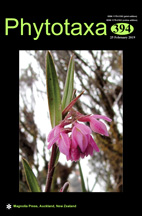Abstract
A first detailed taxonomical, palynological, and ecological study of the Turkish endemic Dianthus vanensis is shown based on field data collected at locus classicus. A revised morphological description, including data of seed and pollen by using Scanning Electron Microscope, is provided. Seed surface displays elongated cells, which are lobate with 14−28 teeth, I, S shaped or irregular, and papillate. Pollen grains are radially symmetric, apolar, pantoporate and spheroidal shape (size: 40.38 ± 0.64 × 37.98 ± 0.36 µm), with scabrate ornamentation, and 9–12 pores elliptical (different margin), and operculate (size: 6.17 ± 0.23 × 4.17 ± 0.39 µm). The anatomy of root, stem and leaf are also investigated. On the outer surface of the root is placed a multi-layered periderm. The cortex consists of multi-layered parenchymatic cells under periderm, and its thickness is 176.49 ± 7.85 µm. In the stem cross-sections, it is noticed one epidermis layer, comprising of flat cells in outermost. Its thickness ranged between 28.13 and 35.29 µm. The type of vascular bundle is hadrocentric. In the abaxial and adaxial surfaces of the leaf are located 1-layer epidermis cells, comprising of the flat or rectangular cells. The leaf is equifacial. Leaves have collateral vascular type. IUCN category of the taxon is assessed CR (Critical Endangered) based on criterion B2a,b(iii).

